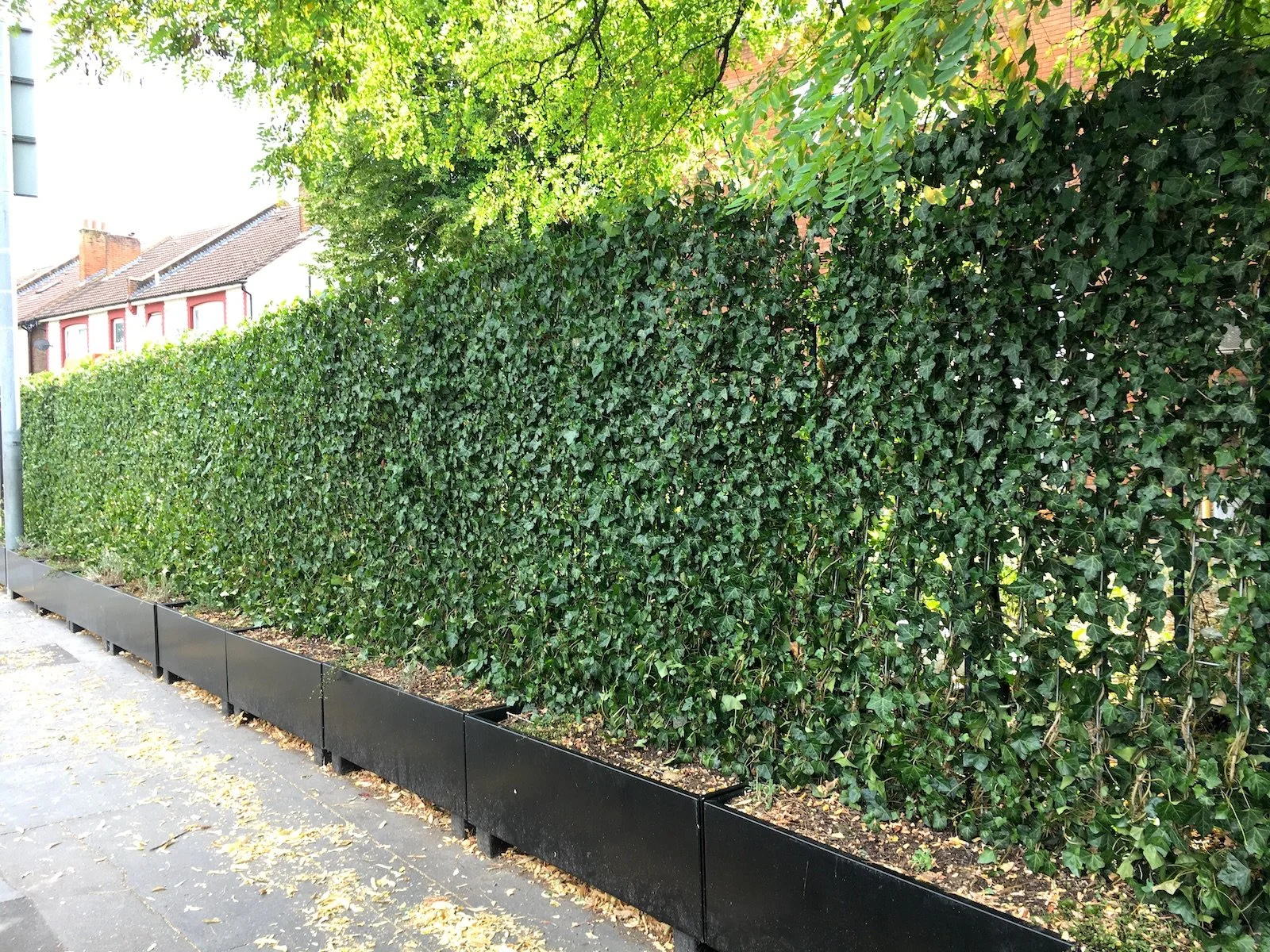Innovative Flood Management: Croydon's SuDS Rain Garden Planters
In the heart of Croydon, a bustling town centre north of London, the confluence of modern development and improved transportation has created a vibrant community hub. However, this transformation has also posed a unique challenge: managing surface flooding during the rainy seasons. Croydon council, with a forward-thinking approach, embarked on an initiative to address this issue while enhancing the town's green appeal.
Croydon council were awarded funding as part of their Healthy Streets programme and appointed Meristem to design, fabricate and install a series of green infrastructure across the town centre.
One of the locations, London Road is a major transport corridor into Croydon town centre from the north of the Borough. Substantial development, improved transport links, and public realm improvements have delivered major change.
Because of the nature of the road, being a wide, busy road with wide pavements, surface flooding proves a challenge in the autumn and winter periods. Meristem's solution was to install 3 large, raised, powder coated steel edged Rain Garden SuDS Planters. The Rain gardens, in total, span an impressive 90m2+.
SuDS Planters, like the Rain Garden Planters, capture rainwater, preventing flooding, and promoting biophilic design, which boosts biodiversity and beautifies urban landscapes.
The catchment area for the rain gardens is very large at around 400m2 and slopes down towards the road which puts a huge stain on the drainage network. Now, with the new Rain Garden Planters working as a green barrier, a large portion of this water is trapped and captured into the Rain Gardens.
The Process Behind Water Flow in the Rain Garden SuDS Planter
Perforations or channels at the surface level allow the water to flow into the raised border. A composition of granular material, geotextile membrane and a specific soil make-up allows the plants to essentially wick up the water through their roots. The water also saturates the soil in the planter, essentially storing a certain amount. The water left over is then able to slowly discharge into the soil below the Rain Garden.
The below diagram explains the process:
The diagram depicts the process of water being gathered through surface perforations, subsequently drawn up by plants using a specially formulated soil mixture, and any surplus water being stored before slowly permeating the soil beneath the Rain Garden SuDS Planter.
The planting within the rain gardens serves a dual purpose: aesthetics and function, as it creates a welcome barrier for pedestrians between the housing and the busy main road. The selection of plant species was strategic, chosen to thrive in conditions of both prolonged drought and occasional saturation. Additionally, the plants act as nature's filters, purifying the surrounding air and contributing to improved air quality.
To ensure the longevity of the rain gardens and the trees they encompass, barriers were thoughtfully installed around the base of trees. These barriers, designed to accommodate the growth of the trees' girth, also provide ample space for maintenance and inspections. Tree bags could be installed if neighbouring plants competed for resources, allowing for a harmonious coexistence.
The scheme, outside 386 London Road fits in with a larger, green corridor that Meristem has installed from Thornton Heath to Croydon town centre. The scheme includes a number of large, powder-coated steel planters used as modal filters, pollution-busting Ivy green screens and tree planting.
Croydon's SuDS Rain Garden Planters project is a stunning example of the intersection of functional design and ecological harmony. As you walk through this transformed landscape, you're not only experiencing a more pleasant journey but also contributing to a healthier urban environment.
Next time you visit the area, why not enjoy the new, healthier walk instead of getting a bus, or perhaps try out the newly installed cycle lanes?
Frequently Asked Questions
What are SuDS?
SuDS, or Sustainable Drainage Systems, are designed to manage rainfall in urban areas, mimicking natural processes to reduce flood risks.
How do SuDS Planters benefit urban areas?
SuDS Planters, like the Rain Garden Planters, capture rainwater, preventing flooding, and promoting biophilic design, which boosts biodiversity and beautifies urban landscapes. SuDS, or Sustainable Drainage Systems, have become crucial in addressing urban flooding, particularly in areas where traditional drainage systems are overwhelmed by seasonal surges.
Why is biophilic design important?
Biophilic design bridges the gap between urban landscapes and nature, promoting mental well-being, increasing biodiversity, and offering environmental benefits like improved air quality. Research shows that exposure to natural elements, such as plants, water, and natural light, can significantly reduce stress, anxiety, and depression.
How does the Rain Garden combat flooding?
A Rain Garden is a strategic intervention in the landscape that leverages natural processes to manage rainwater runoff. Its primary purpose is to reduce the volume and speed of stormwater flowing into the traditional drainage systems, which can often become overwhelmed during heavy rainfall events, leading to flooding.
Meristem's School SuDS Planters win Flood & Coast Award
We are honoured to announce our recognition at the Flood and Coast Awards for our Climate Resilient Schools program, a collaboration with GLA, the DfE, and Thames Water.
We successfully designed and installed 564 SuDS Rain Planters in some of London's most flood-vulnerable schools.







